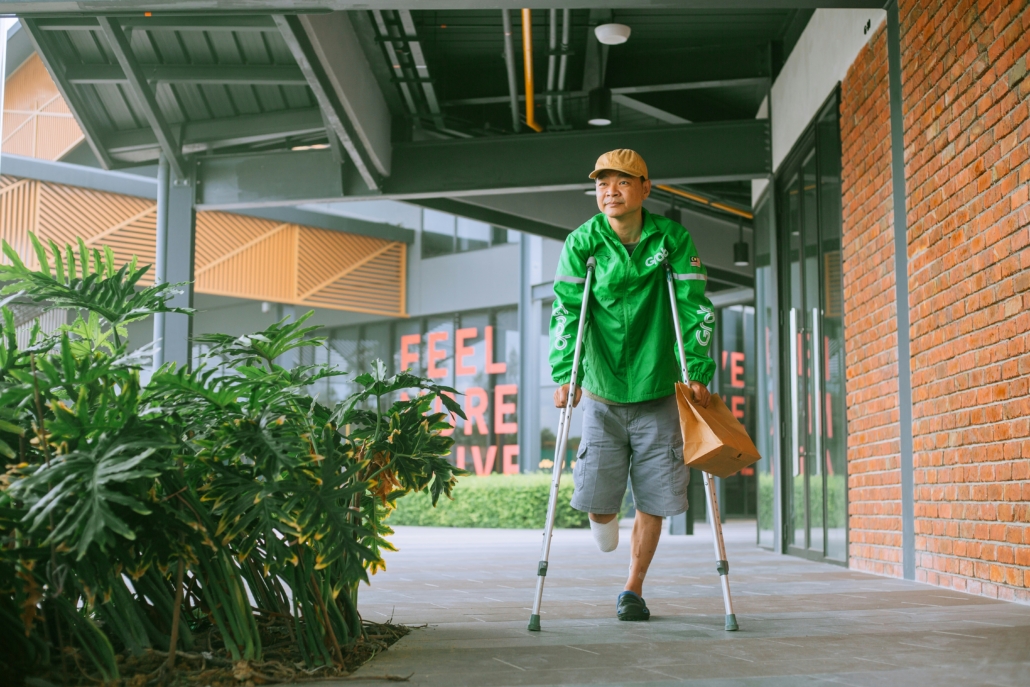Invisible Inequality: Disability and Poverty in Singapore
 Singapore is home to one of the world’s most affluent and exhilarating economic markets, a world-class healthcare system and an exquisite cuisine. Yet, beneath this polished image, lies concerns that receive far less attention: the invisible inequality around disability and poverty in Singapore. These matters continually involve barriers and challenges that the Singapore government is helping to eradicate.
Singapore is home to one of the world’s most affluent and exhilarating economic markets, a world-class healthcare system and an exquisite cuisine. Yet, beneath this polished image, lies concerns that receive far less attention: the invisible inequality around disability and poverty in Singapore. These matters continually involve barriers and challenges that the Singapore government is helping to eradicate.
SG Enable is an agency that centers around disability and poverty in Singapore, aiding anyone from different underprivileged backgrounds. It also aims to make Singapore a more inclusive society by helping to advocate and raise awareness.
About Disability and Poverty in Singapore
According to the Singapore government data, around 3.1% of Singapore’s adult population lives with some form of disability, the rate rising to 13.3% among those aged 50 and above, the biggest percentage seen. Students in Singapore cover the smallest percentage at 2.1%.
While the numbers may seem modest, households and communities deeply feel the effects. People with disabilities (PWDs) in Singapore are significantly less likely to be employed: only 32.7% of working-age PWDs held jobs as of 2023, compared to more than 80% in the general population.
Saltandlight, a foundation that provides a digital gathering space for Christians globally, interviewed Aaron Wong, who has a type of muscle dystrophy called charcot-marie-tooth disease and decided to return to Singapore in 2025, where he grew up. Upon returning, Mr. Wong detailed his tough transition into Cheshire House, a nonprofit care home: “I had to be assisted by hired help whom I barely knew with dressing up and toileting. It was humbling and humiliating.” He described Cheshire House as a “godsend” and said that he “started to see that [he] was not in Cheshire Home as a means to an end, but there was meaning and purpose in me being here within its walls with 110 other people.”
Those living with a disability can contact SG Enable for further help. Otherwise, there are other ways to seek help through the specific organization such as The Singapore Association for the Deaf (SA Deaf) or the Singapore Association of the Visually Handicapped (SAVH).
Addressing Disability and Poverty in Singapore
Through multiple initiatives, the Ministry of Social and Family Development (MSF) announced many ways to help those most affected. The Enabling Masterplan of 2030 was announced on October 11, 2022, which outlines the plan for Singapore as a society that is inclusive for all in 2030, as it was created by, for and alongside persons with disabilities and their caregivers. Along the way, the government has also announced new measures in place to help such as flexible work schedules, and building disability-friendly buildings and sites.
The high cost of living exacerbates this inequality around poverty too. In 2021, The National Institute of Health surveyed the possible correlation between disability and poverty in Singapore. The study’s analysis further revealed that individuals with lower levels of education and those who were unemployed or economically inactive were significantly more likely to have disabilities. This association indicates that individuals facing economic hardship might be at a higher risk of disability, or conversely, that the presence of a disability could lead to reduced educational and employment opportunities, thereby increasing the likelihood of experiencing poverty.
However, the government is taking several measures to help bridge the gap between disability and poverty in Singapore. The Ministry of Culture, Community and Youth (MCYS) introduced subsidized health care, housing and education, and a Ministry spokesperson told the BBC that “Singapore has an extensive social safety net.”
The ComCare Endowment Fund
The ComCare Endowment Fund also emerged in June 2005, which financially aids low income people and families through support programs to the public. To qualify, those applying must have a total income for the household of $1,900 or less, or a per capita household earnings of $650 or less. The Straits Time reported that ComCare had distributed more than $236 million to those in need, a Singapore record since the Fund’s creation.
One can define a developed nation by the dignity and opportunity it provides to its most vulnerable citizens, not by GDP or worldwide rankings. Singapore’s next frontier of prosperity may not be innovation or money, but rather deepening its social contract.
– Sumayyah Karim
Sumayyah is based in London, UK and focuses on Global Health for The Borgen Project.
Photo: Unsplash
